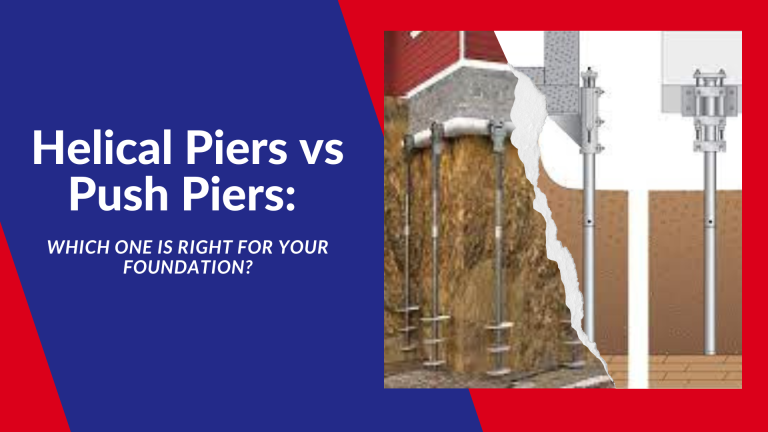
Are you in the construction industry and wondering how many helical piles do i need for my next project? Look no further, because we’ve got the answer for you!
Calculating the perfect number of helical piles is crucial for the success and stability of any construction project. Whether you’re building a commercial structure, a residential home, or even a foundation for a bridge, the number of helical piles required can significantly impact the overall strength and durability of the structure.
In this article, we will delve into the science behind helical pile calculations and explore the factors that influence the number of piles needed. From soil conditions to load-bearing capacity, we will guide you through the process of determining the optimal number of helical piles, ensuring that your next construction project stands on solid ground.
So, let’s dive in and discover the secrets to calculating the perfect number of helical piles for your next endeavor!
What factors determine the number of helical piles needed?
When it comes to determining the number of helical piles needed for a construction project, several factors come into play.
These factors include the soil conditions, load-bearing capacity, and the specific requirements of the project. Understanding these factors is crucial in order to make accurate calculations and ensure the structural integrity of the building.
Understanding soil conditions and load-bearing capacity
The first step in calculating the number of helical piles needed is to assess the soil conditions at the construction site. Different soil types have varying load-bearing capacities, which directly affects the number of piles required. Soil conditions can range from loose and sandy to dense and clayey, each with its own set of challenges.
To determine the load-bearing capacity, soil testing is essential. Soil samples are taken from various depths and analyzed in a laboratory to determine the soil’s properties, such as its strength, density, and composition.
This information is crucial in understanding how the soil will behave under the load of the structure and helps in determining the appropriate number of helical piles required.
Calculating the required capacity for your project
Once the soil conditions and load-bearing capacity have been determined, the next step is to calculate the required capacity for the project. The capacity of a helical pile refers to its ability to support the load placed upon it. This load can include the weight of the structure itself, as well as any additional loads such as equipment, occupants, or environmental factors.
To calculate the required capacity, engineers use a combination of design codes, structural analysis, and geotechnical data. These calculations take into account factors such as the type of structure, the design life, the expected loads, and the safety factors required by local building codes.
The importance of soil testing and engineering analysis
Soil testing and engineering analysis are vital components in accurately determining the number of helical piles needed for a construction project. By conducting thorough soil tests and engineering analysis, the project team can gather critical data that will inform the design and installation process.
Soil testing provides valuable information about the soil’s properties, such as its bearing capacity, shear strength, and settlement characteristics. This data is essential for designing the helical piles and ensuring that they can withstand the loads imposed by the structure.
Factors to consider when selecting helical pile spacing
Another important factor to consider when determining the number of helical piles needed is the spacing between the piles. The spacing between the piles is determined by factors such as the load distribution, the soil conditions, and the structural requirements of the project.
In general, helical piles are installed in a grid pattern, with the spacing between the piles varying depending on the load-bearing capacity of the soil. For example, in soils with high load-bearing capacity, the spacing between the piles can be wider, while in soils with lower load-bearing capacity, the spacing needs to be closer.
Determining the optimal number of helical piles for different applications
The optimal number of helical piles required for a construction project can vary depending on the specific application. For example, a smaller residential structure may require fewer piles compared to a larger commercial building or a bridge foundation.
To determine the optimal number of helical piles, engineers consider factors such as the size and weight of the structure, the soil conditions, the expected loads, and the desired level of safety. By analyzing these factors, engineers can make accurate calculations and ensure that the structure is adequately supported.
Hiring a professional helical pile contractor
Calculating the perfect number of helical piles for a construction project requires expertise and specialized knowledge. It is essential to hire a professional helical pile contractor who has experience in soil testing, engineering analysis, and helical pile installation. A skilled contractor can accurately assess the soil conditions, calculate the required capacity, and determine the optimal number of helical piles for your project, ensuring its long-term stability and durability.
Conclusion: The significance of accurate calculations for successful helical pile installations
In conclusion, accurately calculating the number of helical piles needed for a construction project is crucial for its success and stability. Factors such as soil conditions, load-bearing capacity, and project requirements play a significant role in determining the optimal number of piles.
Thorough soil testing, engineering analysis, and the expertise of a professional helical pile contractor are essential in making accurate calculations and ensuring that the structure stands on solid ground. So, the next time you embark on a construction project, remember the importance of calculating the perfect number of helical piles for a strong and durable foundation.



